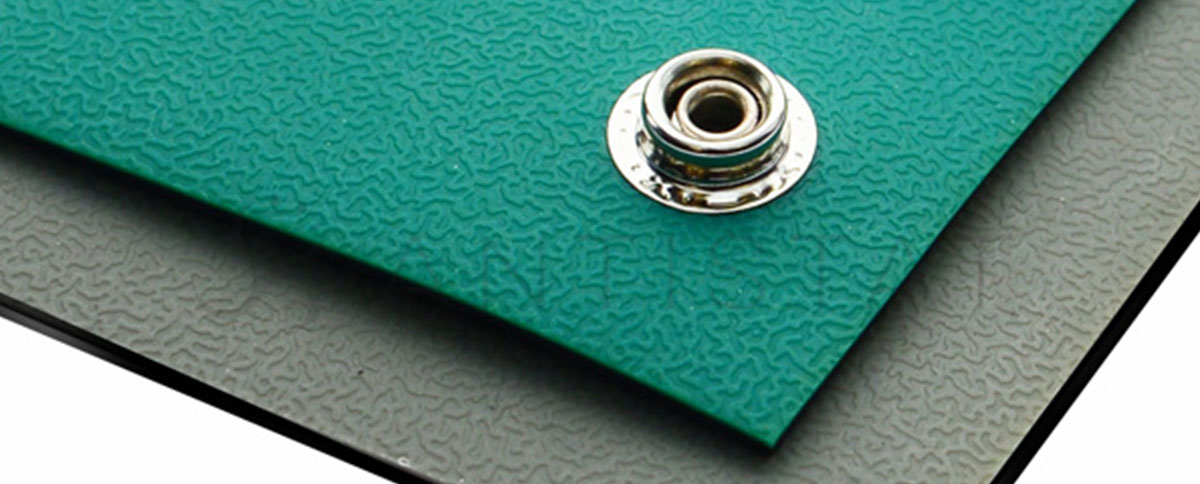As you’re reading this, chances are you already have an interest in Electrostatic Discharge (ESD) or work in an organisation with an EPA (an ESD Protected Area), in which case, you are probably already familiar with ESD matting. However, have you ever wondered how matting works, or why there are so many variants available?
The How
ESD or Static matting is designed to drain static discharge from items placed on its surface. It also serves to protect the surface of the ESD sensitive devices from wear and tear (but that’s a secondary benefit). The way it does this is by slowing down the flow of static charge, which neutralises the static electricity and moves the charge into the (grounded) mat, away from the electronic components being worked on.
The performance of ESD matting is based on the material it’s constructed from, as well as its electrical properties and abilities to withstand heat, chemicals and mechanical abrasion.
ESD matting is generally available in Vinyl or Rubber material.
- Vinyl mats are the most widely used for tabletop or work surface applications. They are cost-effective, easy to cut to shape and provide excellent static dissipation.
- Rubber mats are used where high resistance to heat and chemicals is required.
To work properly a mat must be able to conduct electricity, and its range of conductivity is important. If the mat’s resistance is too low, static transfers to the mat and a spark is created causing an electrostatic discharge which will in turn damage electronic devices. If the mat’s resistance is too high, static transfers slowly and any items placed on the mat will not lose their charge. When that item is then removed from the mat, the static charge will be capable of discharging to other items.
Mat categories
ESD mats are divided into two categories: ESD tabletop mats / ESD worksurface mats; and ESD floor mats.
- ESD table top or work surface mats have a smooth or lightly embossed surface. The reason for the embossed surface option is to break down the surface’s reflective properties, reducing glare and improving operator comfort. Both smooth and embossed mats are available in light colours so the worker can easily see small parts of the components being worked on.
- ESD floor mats have heavy embossing or grooves to prevent slips. They also have anti-fatigue style cushioning to improve working conditions and are available in dark colours to hide scuff marks and dirt. Finally, they are usually thicker than table mats to absorb more wear.
Choosing the right matting
Static mats can be made from solid sheets, multiple layers, and single-layer polymer mix, with each offering different levels of electrical performance.
Homogenous (Vinyl and Rubber)
Homogenous or solid mats are made of a single layer polymer mix and therefore consist of the same material throughout. These mats provide good mechanical service with electrical performance normally limited to about 109 to 1010 RTG.
Three Layer (Vinyl)
Three-layer mats are constructed from a conductive metal/carbon layer between a top surface of the vinyl and a layer of vinyl on the back. The conductive layer improves the electrical properties by acting as a fast track to move the static charge to ground. The foam back layer provides a cushioning effect, making it easier to pick up parts.
Two Layer (Vinyl)
This mat combines the foam from the three-layer mat and the dissipative vinyl from solid mats. As it contains no metallized layer it provides average electrical performance. It does, however, provide a more cost-effective option.
Two Layer (Rubber)
This option provides a top layer of static dissipative rubber and the back layer of conductive rubber, giving the same electrical performance as the vinyl three-layer mat, but with great tolerance to heat and chemicals. The type of matting, however, does come with a cost premium.
Still unsure which type of mat is best for you?
This table condenses all of the above into a helpful at a glance format.
| Mat Type | Electrical Properties | Usage | Features | |
|---|---|---|---|---|
| RTG | RTT | |||
| Homogenous | 109 – 1010 | 109 – 1010 | Table/Floor | Durable material |
| Three Layer Vinyl | 107 – 108 | 107 – 108 | Table | Excellent electrical properties |
| Two Layer Vinyl | 109 | 109 | Table | Low cost |
| Two Layer Rubber | 107 – 108 | 107 – 108 | Table | Heat/solder tolerant Chemical resistant Excellent electrical properties |
If you would like more details or technical specifications for matting, visit the website, call us on +44 (0)1473 836 200 to speak to one of our team or contact us below.


